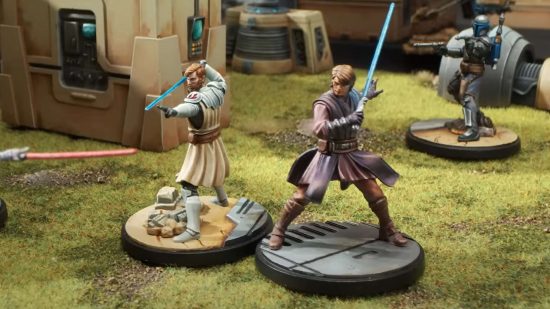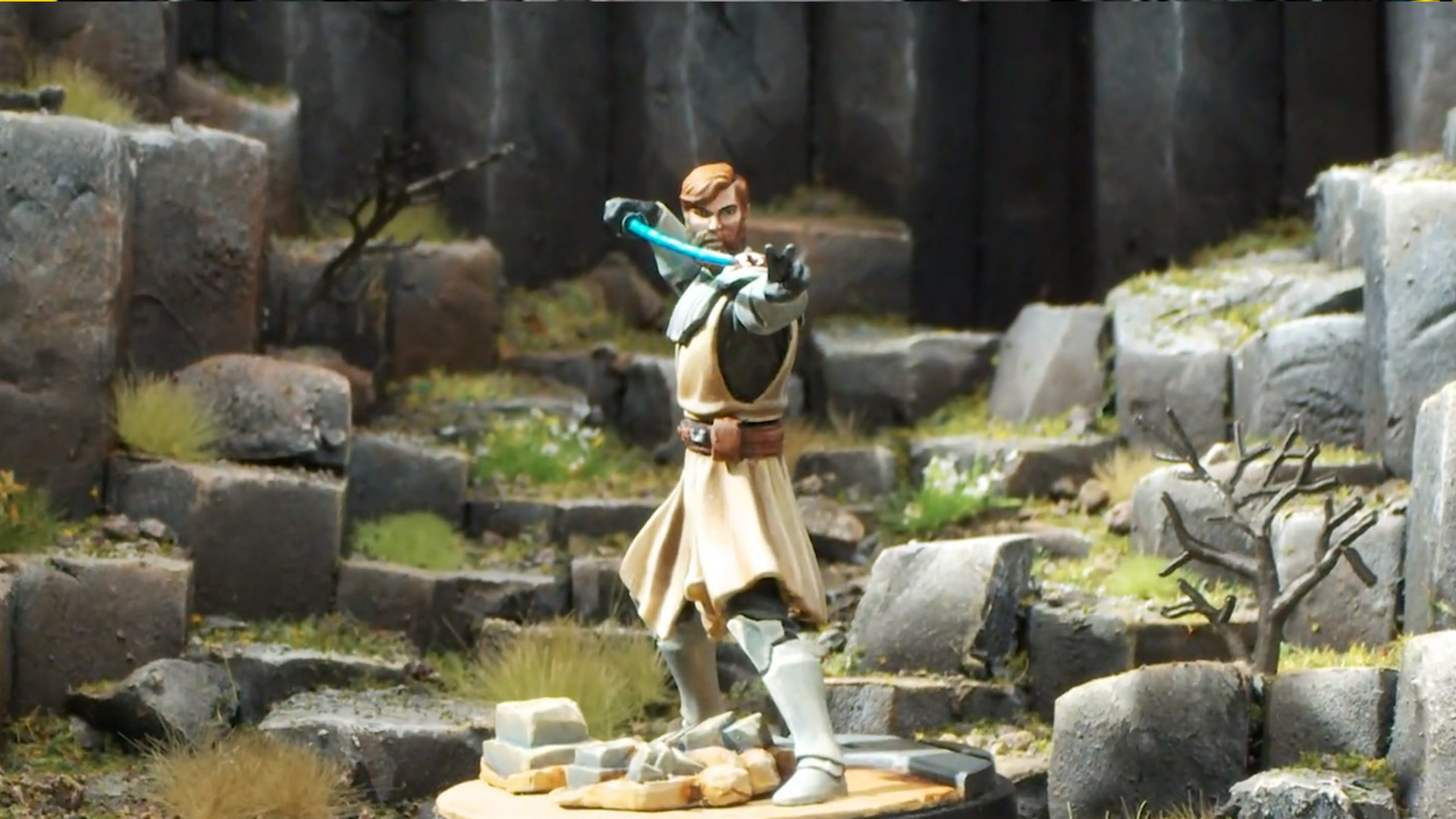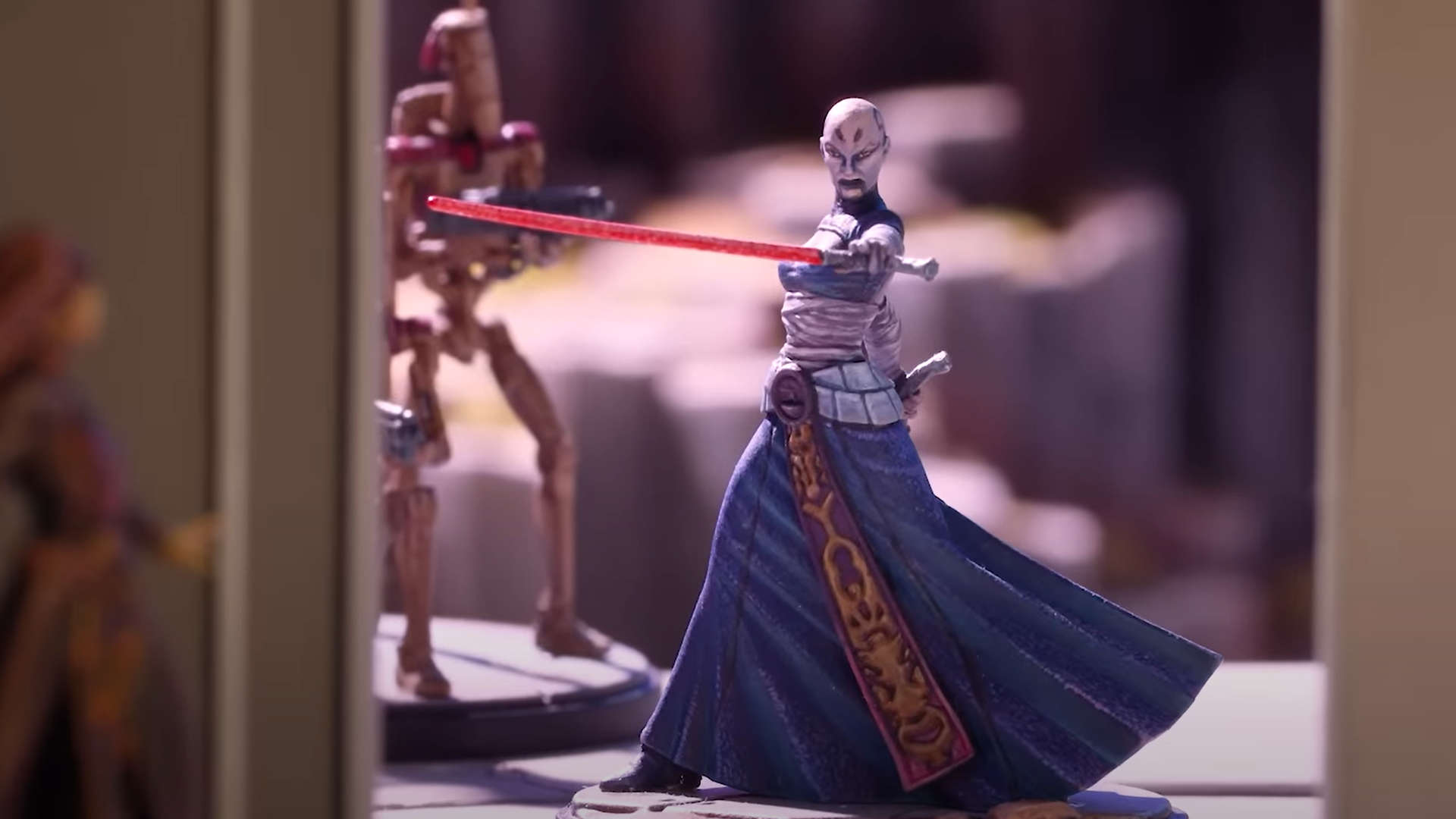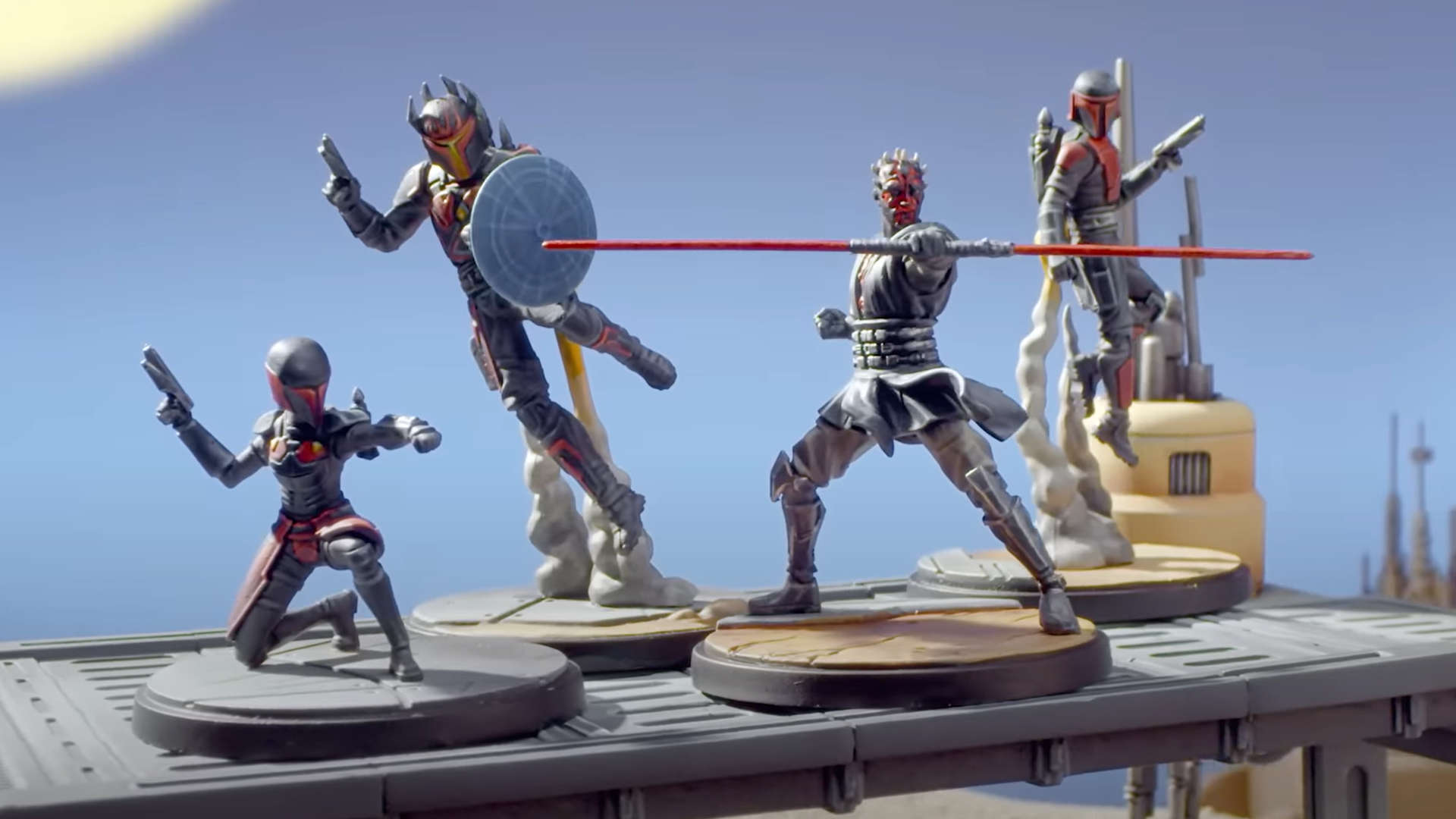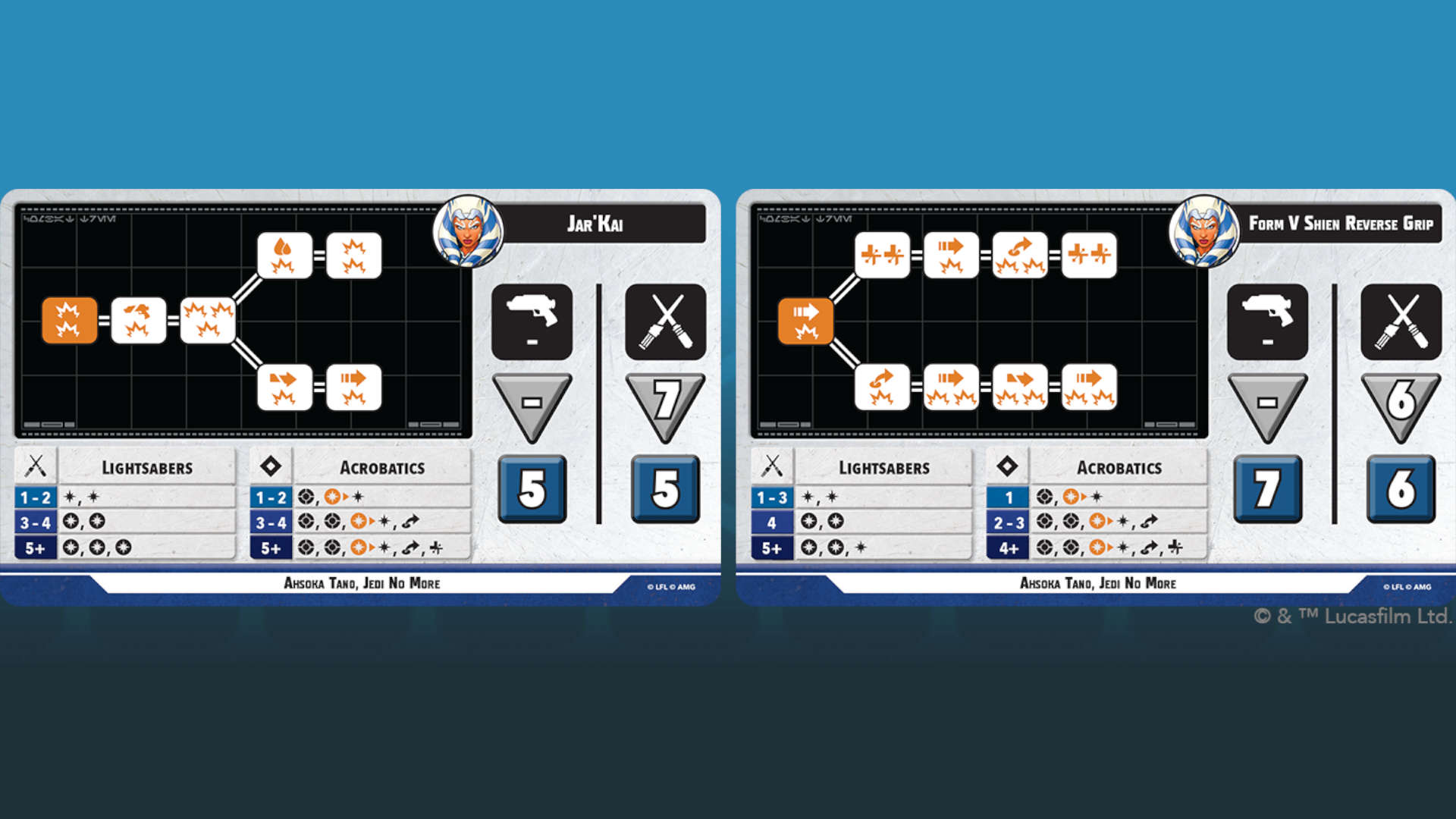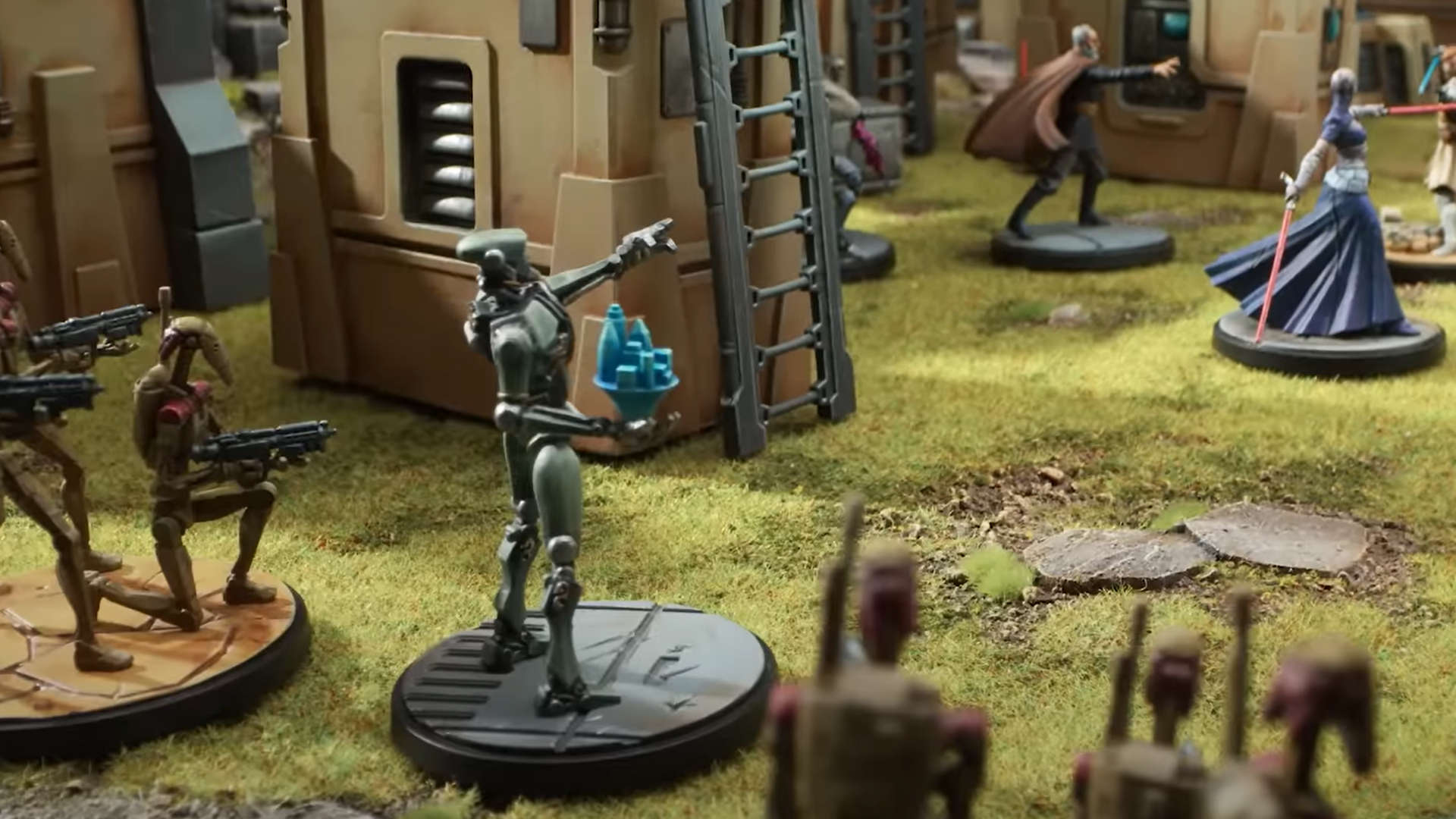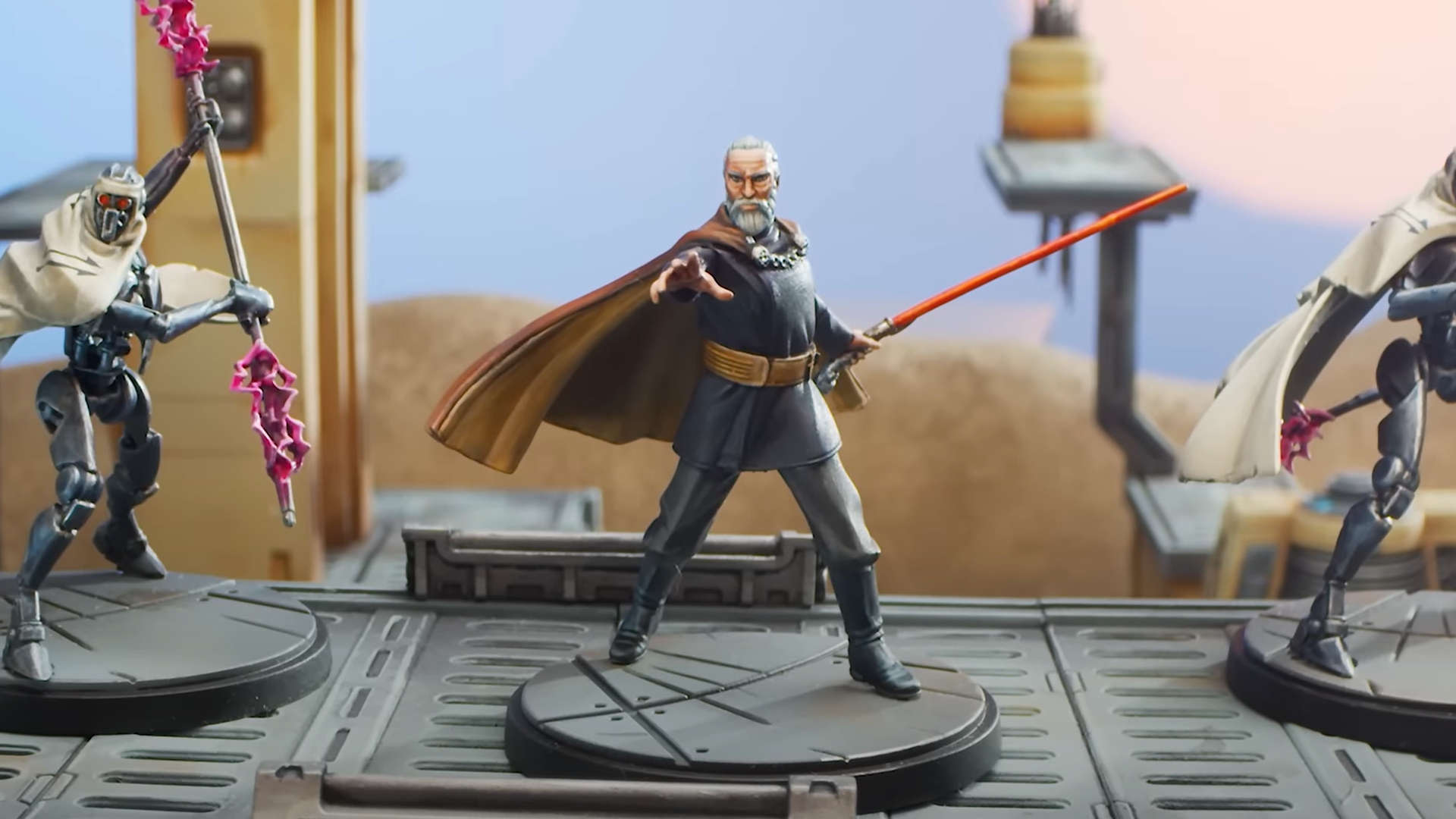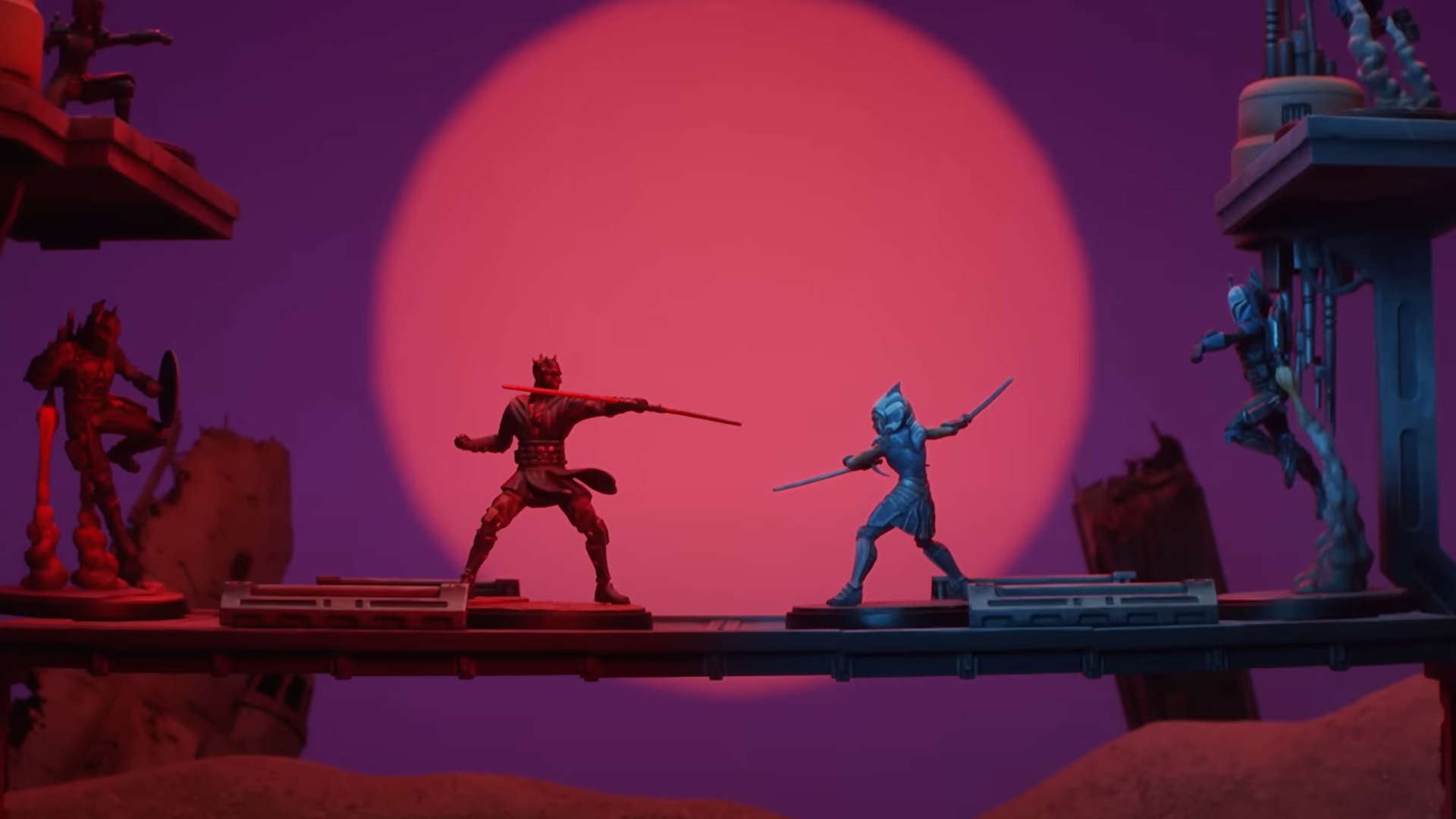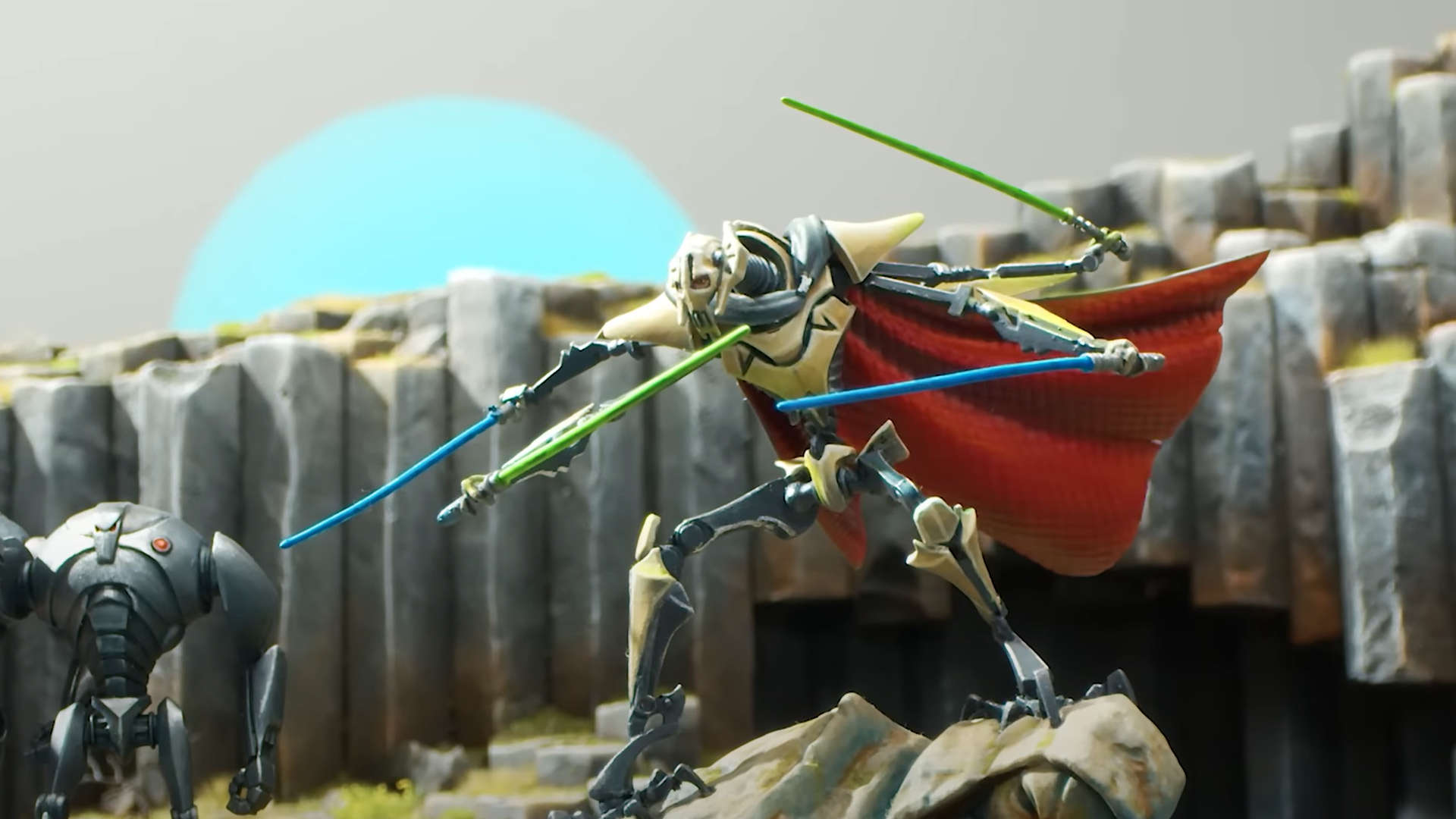Star Wars Shatterpoint lead designer Will Shick says the team at Atomic Mass Games spent a surprising amount of time “carefully reviewing every aspect and detail of the characters we worked on to make sure they were accurate and faithful representations of their on screen personas” while designing the upcoming skirmish wargame.
With the Star Wars Shatterpoint starter set releasing this year, Wargamer interviewed Shick to find out more about the game. As director of Product Development at Atomic Mass Games Shick oversees an enviable stable of licensed wargames, including Star Wars Legion – which holds a place on our list of the best Star Wars board games – and Marvel Crisis Protocol – one of the best miniature wargames full stop, and another project Shick worked on personally.
As the full transcript of our interview with Shick shows, he has plenty more to say about Star Wars, this intriguing new game, and how Atomic Mass Games brought it all together.
Wargamer: What kind of Star Wars research did you do for this project?
I’ve been an avid Star Wars fan since I first saw Episode IV on public network TV when I was like 4 or 5 years old. Since then I’ve been pretty voracious in consuming Star Wars media which meant that when it came time to get started on Shatterpoint I didn’t really have spend too much time digging into research.
However, while I didn’t have to do a lot of research to get started, I was surprised by just how much time we spent on carefully reviewing every aspect and detail of the characters we worked on to make sure they were accurate and faithful representations of their on screen personas. This did give us an opportunity to dig deep not into just the Lucasfilm archives but also rewatch some of our favourite episodes and scenes from the movies and animated series.
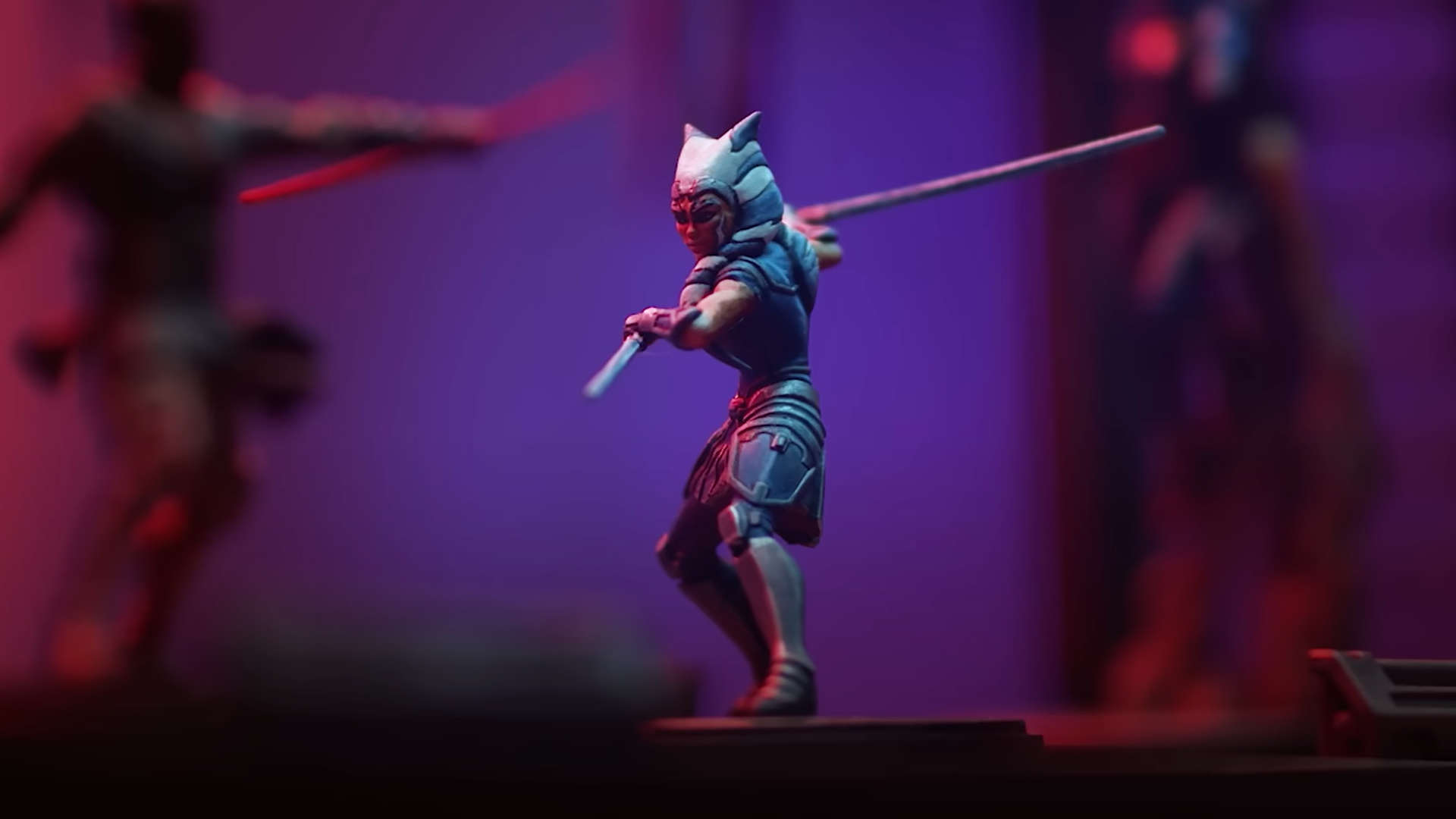
Wargamer: What’s the coolest or craziest thing you’ve seen in a game so far?
I think one of my favourite moments was one of the early games I played with Michael Plummer, who had just recently joined the staff and was working on getting up to speed to eventually take over as Lead Developer on the game. We were testing Padawan Ahsoka Tano on this mag lev train table set up. The board was criss-crossed with all these elevated train tracks and I needed to take control of two objectives basically across the board from each other in order to win the struggle. Through a combination of Ahsoka’s abilities and combat tree results I was able to clear one objective, leaving a Clone Trooper in control and then have Ahsoka batter and jump her way across train tracks and using ingress points to effectively cross the table and overtake the second point.
One of the things I love about getting to work on games and teaching other people how to play games is seeing that moment where the person you’ve been teaching’s face does that little scrunch thing and then suddenly releases and you see that flash of cosmic understanding dance through their eyes, immediately followed by some kind of child-like joy as it all sets in. That was the moment I knew Plummer was completely hooked.
Wargamer: How long does it take new players to get to grips with the rules?
One of the things I’m really happy about with Shatterpoint is I think we’ve succeeded in making a miniatures game with a very low floor, but exceptionally high ceiling. Usually by the end of the first Struggle new players have a very solid grasp of the core concepts and mechanics of the game. Mastery of the tactics and strategy of the game however, like all really great miniatures games is a much longer road.
Wargamer: are there any habits that players might need to unlearn?
Shatterpoint has a lot of little nuances that are different from many miniatures games established players might get caught by. I think one of the biggest ones is remembering that Wounded Units still function almost identically to non-Wounded Units. Most importantly, they can be affected by allied and enemy abilities and targeted by attacks.
I think another thing players will likely have to unlearn is their underestimating of just how far miniatures can move during an activation. Having given and watched a lot of Shatterpoint demoes now, the number one comment I hear people make after seeing the game in action is just how fast everything is. That speed and dynamic movement is core to Shatterpoint’s design and I think something that does set it apart from a lot of other games in its genre.
Wargamer: Will players have to get comfortable playing reactively?
Shatterpoint is designed to directly challenge players ability and skills at adapting and reacting to an ever evolving and changing battlefield. While great Shatterpoint players will always be ones who understand the strengths and abilities of the Units that make up their Strike Teams, the game is designed to put players constantly on the back foot. The question Shatterpoint asks isn’t, “Can you create a plan and execute it in the face of the enemy?” but, “How quickly can you adapt to and overcome an ever-changing situation in which you have very little perfect information?”
You don’t necessarily know what Unit will activate next for either you or your opponent, you can’t be sure that where you end your character’s movement will be the spot they are in by the time they activate next, and, because of the high level of out of activation movement and abilities built into the game, you can’t even be sure that your opponent’s characters that have already activated will remain in their positions before they activate again.
Wargamer: The game has lots of information on cards. What parts of the game will keep players’ attention focused on the tabletop, rather than the cards or dice?
Overall the amount of time spent referencing the cards is pretty equivalent to other character focused skirmish miniatures games. While there is a lot of information on the cards, the referencing of that information is spread across the course of play, meaning that players are able to quickly identify the section of text they need and then apply it to the game. Probably the largest amount card referencing will be around combat resolution, as the combat trees and decisions player’s make around resolving their character’s attacks center around the information on the Stance card.
However, one of the key things about all the abilities in Shatterpoint is that they all directly affect the tabletop in some important way. The best example of this is the combat tree and its results. The number of shoves which have players move their target and themselves around the battlefield combined with the movement triggers Units have on their combat trees that allow players to reposition the attacking character into advantageous positions mean that player’s focus is never wholly on the card, but instead about what the effect on the card means for the tabletop.
Wargamer: When it comes to an audience for this game, who do you think will get the most out of it?
Honestly I think Shatterpoint, like most great games, is a lot like the cave on Dagobah. Player’s will find the experience they bring with them. From AMG’s side, we take extreme care in making sure the games we create have a strong internal balance and the cleanest and most precise rules we can write. But more importantly, we do this always with a primary focus on the experience and flavor of the game. So I think Shatterpoint has lots to offer whether you want to test your skills in a competitive environment or if you want to play dynamic and exciting Star Wars skirmishes with your friends.
That said I do think that, just by the nature of the game, the segment of players who want to dive into the skill based focus of competitive play will be wired quite differently from your more traditional tournament player as Shatterpoint demands a unique mindset and tactical acumen very unlike pretty much any other major miniatures game out there right now.
Wargamer: What kinds of cool new minis can we expect from Shatterpoint?
Unfortunately we can’t really comment on future releases. That said, obviously the Star Wars Galaxy is quite big and there is no end of cool possibilities for Shatterpoint to explore that could bring all kinds of things to the tabletop.
Wargamer: Can you point to any systems in Shatterpoint that have their origins in earlier designs?
The terrain system in Shatterpoint, with how it handles elevation and how miniatures interact with it on the tabletop (things like having gantries with underpasses and such) was heavily based on the foundations of the terrain system in our other skirmish miniatures game Marvel: Crisis Protocol. While each system has its own unique needs for the gameplay experience they want to create, Shatterpoint’s rules directly benefitted from our experience with the can and can’t of the Crisis Protocol system which helped immensely with us being able to create rules that allowed for the verticality and interaction we wanted to create the feel of iconic Star Wars duels.
Wargamer: Is 3D terrain essential to get the full Shatterpoint experience?
While Shatterpoint can be played on a more traditional, flat battlefield layout with scatter terrain for cover, it’s a lot like not using high octane fuel in a high performance engine. You just aren’t going to get the full experience out of it and it’s going to dull the experience a bit. So much of the core mechanics and systems in the game were designed in tandem with the expectation and desire to see a lot of 3D verticality in the game. And with this being a core pillar in the design philosophy, so much of what characters can do and how the game plays is built and balanced with this in mind.
So ultimately, while you can play with little to no elevation on the battlefield, I think once you do, going back to games without it will just never feel quite right. And it was because of this that we did everything we could to make sure the Core Set had that critical terrain right there in the box so players can get started on the right foot and expand out or combine their set with their opponent’s set to make for a more full experience.
What other options will there be for players to get started if they can’t afford to spring for the core box?
For players who don’t want to start with the Core Set, they can still jump into Shatterpoint though it will be a bit more difficult. To play the game players need two squads to create their Strike Team. So two Squad Expansion packs will fill that out. Players will also need a set of the measuring tools and dice. What players won’t be able to easily acquire at launch though is the Mission Pack, as the first one will only be available in the Core Set. If you are only playing with friends though, as long as your opponent has the Mission Pack you won’t need your own. However, if you are planning on attending official events you will likely be expected to provide your own Mission Pack. There will be new Mission Packs offered separately from the Core Set later on, but if you want to dive right into event day one, this is something to seriously consider.
Overall, while it does represent a decent investment, we’ve worked really hard to make sure that the Core Set is not only the best starting point in terms of all the stuff players need to dive into Shatterpoint, but also that it represents a strong and compelling value compared to collecting the game ala’cart.
